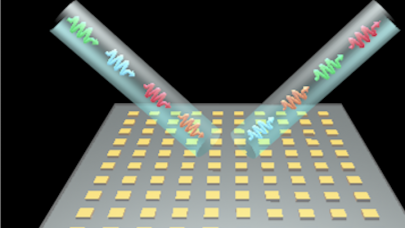This week at the IDC User Forum in Tucson, a relatively small but tight-knit knot of supercomputing colleagues clustered in the air conditioning to debate the standard host of HPC topics, with the expected refreshers on big data, the various walls to scale, and domain-specific application areas (manufacturing simulations and astrophysics were two such themes).
 Naturally, this was chased with plenty of coprocessor and chip chatter—a topic that seemed to generate fierce speculation and strong opinions during one-on-one conversations. To lend some perspective, we sat down with IDC HPC analyst, Steve Conway, to drill down on the differences in new approaches and how they could drive change in the coming few years as the software, programming and performance metrics continue to shake out.
Naturally, this was chased with plenty of coprocessor and chip chatter—a topic that seemed to generate fierce speculation and strong opinions during one-on-one conversations. To lend some perspective, we sat down with IDC HPC analyst, Steve Conway, to drill down on the differences in new approaches and how they could drive change in the coming few years as the software, programming and performance metrics continue to shake out.
Conway started with the lighter fare by pointing to a 2012 study IDC conducted for an unnamed government agency that sought to visualize what HPC systems would look like five years down the road. Using input from around 50 key ecosystem vendors, the findings detailed how x86 would almost certainly maintain its throne with heterogeneity stepping up ever closer to its side.
Those results are noteworthy, but probably don’t come as much of a surprise, especially since they mesh well with what is easy to observe through conversation and corroborated with other analyst views, including those of Intesect360 Research. However, Conway’s group just rounded out a larger multi-client study to see just how much the processor ecosystem change was affecting life at ground level—and this time, IDC was rather bowled over by the responses to some silicon-specific queries.
Every 18 months IDC checks in with user sites to take the tech investment pulse as it beats against key items. While they expected to see a jump in coprocessor and accelerator uptake, they were wholly unprepared for the overwhelming positive response to GPUs and new entrants into the market, most notably Intel’s shiny new Phi.
Conway said that while accelerator and coprocessor adoption growth was anticipated, they had no idea that it would have been over double what it was from the short time since their last survey.
He noted that while this was a striking finding, it should be balanced with the understanding that these approaches are not the majority of what sites are using since it’s still mostly CPU dominated—but this means big things for the future of companies like NVIDIA and Intel as the processor wars heat up.
On that front, it’s also worth mentioning that there were strong gains on the coprocessor and accelerator from around the industry, although he says that the public sector was the more dominant area. Still, as Conway notes, there is a wide degree of variation, even in this segment. For instance, some labs, Oak Ridge in particular, are snatching up GPUs left and right, while others of similar scale, including NCSA, have had a less enthusiastic buying spree with GPUs because they have different attributes and determined that for their needs (versus Titan’s relatively smaller user base) the payoff just wasn’t present.
The point is, says Conway, “Heterogeneity is very much on the rise. We are moving past the experimental phase, people are doing real work now.” Of Phi in particular he notes that things are moving along, “but it’s still not clear how easy the new generation will be to program—the real thing here is that it’s going to take time to grow the software ecosystem.”
He continued, noting one primary benefit of GPUs in the wake of their striking results—GPUs have simply been around longer. Everything, including the all-important software side, is farther along, Conway reminisced about the excitement in the air when GPUs were the new kid on the HPC block, pointing to the same reaction to Intel’s push of Phi into the ecosystem.
At this point, he says, it’s all about claims—there are no real ways to determine just how simple to program Phi will actually prove to be, but the possibilities have certainly piqued the interest of more parties than IDC predicted. Further, the performance verdict is still not out in terms of actual performance, but the details are being moved out and by the next census of its kind, there will be a much stronger story to tell on both sides.
The big piece of the puzzle for the coprocessor and accelerator companies to click into place involves the larger HPC ecosystem. FLOPs are valuable as a census of sorts, says Conway, but there are new needs that are pushing us farther away from the “compute-centric” reality we’re still immersed in today.
Acceleration and pushing performance are always going to have a place, but we will need to watch these stories unfold in the larger context of how system vendors pull together to push the interconnect to new heights (another developing story for Intel with its recent acquisitions of both Cray and QLogic interconnect tech), says Conway. Users with “big data” needs are seeking less compute-centric and more data-centric approaches that emphasize the ability to ingest and analyze versus tear through Linpack results to arrive at figures that don’t reflect real application performance.
Again, he agrees that the Top 500 is of great value to the community, but the next years with their innovative memory and interconnect doors to open will start to build the foundation for more balanced HPC systems—and hopefully those with wider appeal and further fine-tuning for data movement versus raw horsepower.
It’s not easy to find analyst groups that agree on the broader level, but in this case, HPC analyst Addison Snell and his group at Intersect360 Research contend that accelerators are a top-of-the-list item to watch, even if compute-centric and data-centric advocates push their points. “Accelerator use is in the early stages but results point to continued penetration of the market.” They added to this in their own list of predictions that CPU cores will proliferate on CPUs and accelerators as users explore the limits of parallelism as processor architectures diversify.”
So with all of this in mind, take a quick look at what select folks in the community are talking about this week via the IDC User Forum Agenda. Some cool astrophysics presentations were to be had this morning—tomorrow comes an extension on this talk with a host of mini-presentations on processor and accelerator advancements.
Related Stories
FLOPS Fall Flat for Intelligence Agency
IDC: Supercomputing Spending Jumps 30 Percent
NVIDIA: 70 Leading Apps Add Support for GPU Accelerators

























































